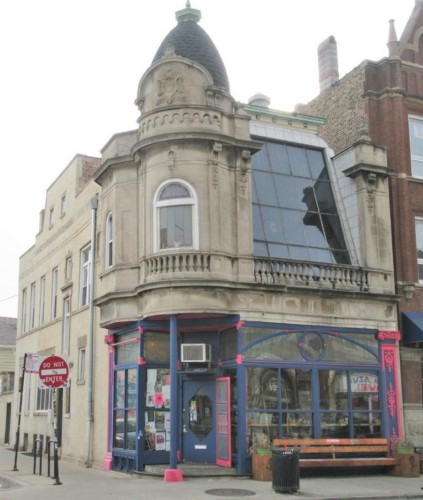
By Steve Redfield, Class of 2019
An important decision about landmark status for Pilsen is under consideration right now.
This year marks the 50th anniversary that the first two buildings were landmarked by the city’s “Commission on Chicago Landmarks.” Since then, more than 400 buildings and districts have landmark status, providing important protections from demolition and alterations. Chicago surely earns its architectural acclaim from the wealth of historic buildings that stand alongside the striking, new additions to our skyline.

Much as we cherish our history, the decision to “save” a building or district is not simple. Chicago’s vitality arises from a delicate balance of new development and growth, care for historic structures, and sustaining the people, businesses, homes, and cultures that make up our communities. Today, this complexity is playing out in the consideration of a Pilsen landmark district, encompassing more than 400 buildings along West 18th Street.
Everyone agrees that Pilsen, an historically Czechoslovak, now Mexican-American community, is changing: 14,000 fewer people of Mexican descent live there today than in 2010, and 90 buildings have been demolished since 2006. But among people who want to protect the current culture, residents, and businesses, there is disagreement over how to accomplish that goal.

The city has proposed the landmark district to deter demolition, along with additional tools, including a “density overlay” and low-interest loans for building repairs with the intent to slow displacement and maintain the neighborhood’s character. But many homeowners and business owners think landmarking will cause property values to rise and increase the costs of maintaining properties, thus actually accelerating displacement. Saving buildings doesn’t mean saving communities, they argue. In yet another consideration, working families who have owned their buildings for decades don’t want to lose the value of their investments.

In response to community opposition, including Pilsen’s alderman, the city has revised its original proposal, cutting the number of protected buildings by almost half. Community members have proposed a suspension on demolitions as well as a review by the Cook County Assessor’s Office to seek ways to help long-term residents stay in the community. For the next step, the City Council’s zoning committee is expected to take up the proposal in December.
Many media outlets have been covering the discussions. Block Club Chicago has a recent free article. CLICK HERE to read.
And CLICK HERE to read the city’s rationale, including the original staff recommendations.
What do you think?


Steve, what a succinct and poignant way to describe the dynamic between growth and architectural preservation: “Much as we cherish our history, the decision to ‘save’ a building or district is not simple. Chicago’s vitality arises from a delicate balance of new development and growth, care for historic structures, and sustaining the people, businesses, homes, and cultures that make up our communities.” I like the way you showed how this discussion is topical by tying in the 50th anniversary of the work by the Commission on Chicago Landmarks (along with your connection to giving the Pilsen tour). Thanks for sharing.